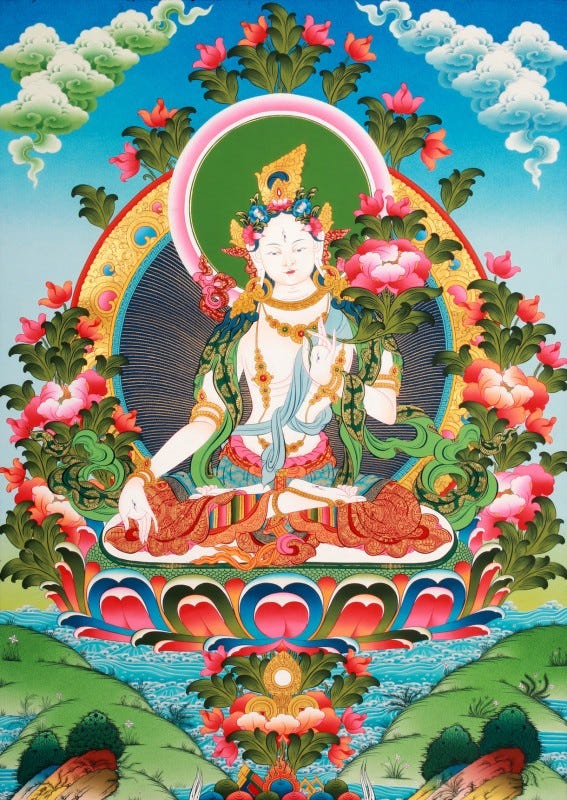Perhaps nobody, save His Holiness the 14th Dalai Lama, Tenzin Gyatso, has done more for the Tibetan people than his direct predecessor, Thubten Gyatso. But to truly understand a man, one must first understand who taught him. And for that teacher, his story starts in the steppes of southern Siberia.
Agvan Dorzhiev in the early 20th century (Photo from the National Museum of the Republic of Buryatia)
Agvan Dorzhiev was born in the ulus (a type of rural locality among historically Turkic- and Mongolian-speaking areas of Russia such as Sakha, ultimately deriving from a Turco-Mongolian word meaning “people” or “nation”) of Khara-Shibir’ in 1854, now located in the Zaigrayevsky (district) of Russia’s Republic of Buryatia. Although not much is known of his childhood, he studied from a young age at Atsagatsky (now known as Shulutsky) datsan, a monastery and university near his home. He remained celibate and unmarried as a layperson before his ordination into the sangha as a teen.
In 1873, a nineteen-year-old Dorzhiev made a pilgrimage to Tibet to seek education, joining the monks of Drepung monastery in Lhasa, one of the so-called “great three” monasteries of the Gelug school of Tibetan Buddhism alongside Sera and Ganden, and also the largest monastery in Tibet. In 1888 he completed his education and received the title of Geshe Lharampa, roughly equivalent to a PhD in the west, and was appointed as a tsan-shab (Wylie: mtsan-zhabs, debate partner) for the young 13th Dalai Lama. He would serve in this position for 10 years, teaching the Dalai Lama both Tibetan and Sanskrit grammar, as well as astrology and philosophy.
As the Dalai Lama’s personal teacher, Dorzhiev became quickly acquainted with the Tibetan aristocracy and sought to further the Tsar’s interests in Potala. At the time, the British and Russian empires had been fighting for control for central Asia in a geopolitical struggle known as the Great Game for decades, and Tibetans grew anxious over the looming possibility of a British invasion from India. Fearing losing their already tenuous autonomy and hearing of Russian laws protecting Buddhism as well as Dorzhiev’s militant stance and considerable influence, the nobility’s support started to shift to Russia.
After his time mentoring the Dalai Lama had ended, Dorzhiev returned to Russia in 1898 and made his first visit to St. Petersburg. While in the capital, he met then-Tsar Nikolai II and presented him with a Buddha statue along with a khatag, a type of ceremonial scarf in Tibetan Buddhism. Dorzhiev believed the Tsars to be emanations of White Tara, a female Buddha associated with protection, longevity, and enlightened activities. This belief had existed since the period of Catherine II, and was most likely not a genuine attempt at deification, but rather a political ploy to garner sympathy and attention for Buddhists from the Emperor.
White Tara (Image credits to Padmasambhava Buddhist Center, Sidney Center, NY)
From St. Petersburg, Dorzhiev went to London and Paris, making connections with princes and other European nobility before his return to Tibet. He would spend some time there, but returned back to the Russian capital with other Tibetan envoys in 1900 bearing more gifts for the Tsar. He then departed once more, arriving back in Lhasa to receive teachings from the 9th Panchen Lama, Thubten Chokyi Nyima.
BIBLIOGRAPHY
Agvan Dorzhiev and His Contribution to the Modernization of Tibet: Education of Young Tibetans in Russia in the Early 20th Century, Alexandre Andreyev
An Unknown Russian Memoir by Aagvan Dorzhiev, Alexandre Andreyev
Entries on Agvan Dorzhiev and Atsagatsky Datsan, The Treasury of Lives
Notes on the history of Buddhism in Russia, Free Buryatia Foundation (Translated from Russian)





